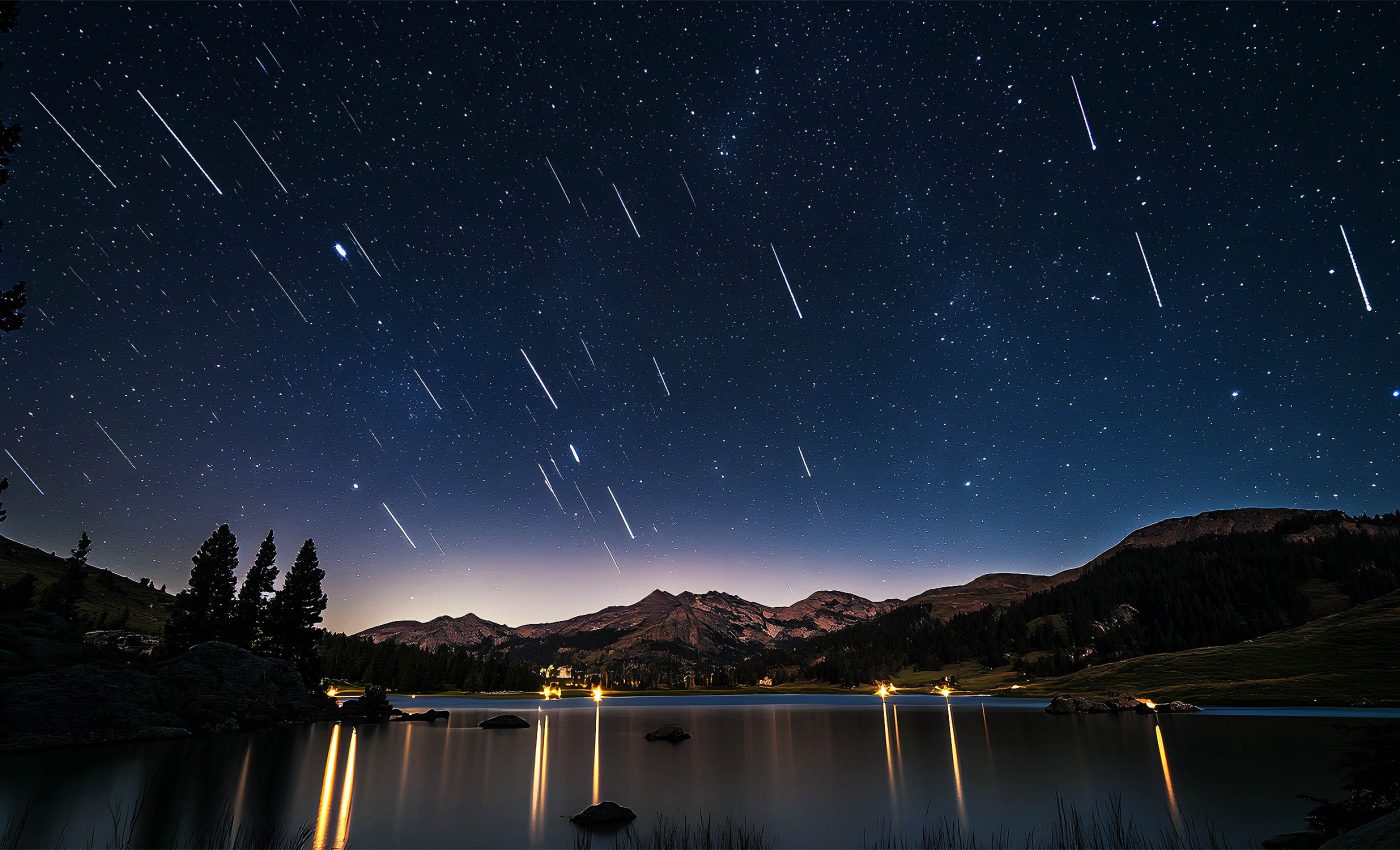
Meteor showers help scientists learn where comets came from
The sky tells its own tales with stars as protagonists, planets as supporting characters, and meteor showers and comets as special effects that add sparkle to this cosmic script.
Now, scientists have uncovered a new plot twist, one with meteors that shines a light on where comets formed in the early solar system.
According to an international team of 45 researchers studying meteor showers, comets don’t all disintegrate alike as they approach our Sun.
In a paper published in the scientific journal Icarus, they attribute these differences to varied conditions within the protoplanetary disk, the birthplace of comets nearly 4.5 billion years ago.
Showering new insights
“The meteoroids we see as meteors in the night sky are the size of small pebbles,” said lead author and SETI Institute and NASA’s Ames Research Center meteor astronomer Peter Jenniskens. “They are, in fact, the same size as the pebbles that collapsed into comets during the formation of our solar system.”
Flashback to 4.5 billion years ago, when our solar system was in its infancy, particles in the protoplanetary disk around the young Sun gradually grew from dust to pebbles.
“Once pebbles grow large enough to no longer travel along with the gas, they are destroyed by mutual collisions before they can grow much bigger,” said NASA Ames planetary scientist and co-author Paul Estrada.
“Comets and primitive asteroids instead were formed when clouds of these pebbles locally collapsed into kilometer-sized and larger bodies.”
Sun-soaked comets and meteors
Fast forward to present day, and we see comets, as they approach the Sun, crumbling into smaller fragments called meteoroids.
These meteoroids co-orbit with the comet for a while, and can later delight us with glorious meteor showers when they hit Earth’s atmosphere.
“We hypothesized that comets crumble into the sizes of the pebbles they are made of,” said Jenniskens.
“In that case, the size distribution and the physical and chemical properties of young meteoroid streams still contain information about the conditions in the protoplanetary disk during this collapse.”
Worldwide surveillance
Jenniskens and his team of professional and amateur astronomers use special low-light video cameras in a project called “CAMS” – short for Cameras for Allsky Meteor Surveillance.
The team set up networks of these cameras globally to track meteoroids’ paths, the height at which they first ignite, and how they slow down in Earth’s atmosphere. They also gleaned insights into the chemical composition of some of these meteoroids.
Studying 47 young meteor showers, they found fascinating differences in the crumbles of two types of comets: Jupiter-family comets from the Scattered Disk of the Kuiper Belt beyond Neptune and long-period comets from the Oort Cloud surrounding our solar system.
Different crumbles for different comets
Jenniskens and his team found that long-period comets often crumble into sizes suggesting gentler accretion conditions, while Jupiter-family comets usually crumble into smaller, denser meteoroids, showing more diversity in their content.
So how does this all fit into the grand cosmic story? As the giant planets were growing, Neptune moved outward, scattering comets and asteroids out of the remaining protoplanetary disk.
This movement likely created both the Scattered Disk of the Kuiper Belt and the Oort Cloud, which host our long-period and Jupiter-family comets, respectively.
Meteors and comets: Solving the puzzle
However, this story has some plot holes. If the scattering by Neptune was responsible for creating both types of comets, they should have similar properties.
But our diligent researchers found otherwise, suggesting that the long-period comets only survived in their long orbits after the Sun had moved away from the stars and molecular clouds in the Sun’s birth region.
In contrast, Jupiter-family comets have always been on shorter orbits and represent all objects scattered by Neptune on its outward journey.
Weaving together these complex pieces of our cosmic history, the researchers have shed light not just on the birthplaces of comets, but also on the dynamic and fascinating process that led to the structured, beautiful solar system we call home.
Wrapping up the cosmic journey
So, what’s next in this celestial saga? Will there be more plot twists as we unravel the secrets held by meteor showers?
As the mystery unfolds, one thing is clear: the night sky isn’t just a splattering of stars. It’s a living, breathing tale of our universe’s past, present, and future.
So, sit back, look up, and enjoy the cosmic show — it’s been billions of years in the making.
The study is published in the journal Icarus.
—–
Like what you read? Subscribe to our newsletter for engaging articles, exclusive content, and the latest updates.
Check us out on EarthSnap, a free app brought to you by Eric Ralls and Earth.com.
—–













